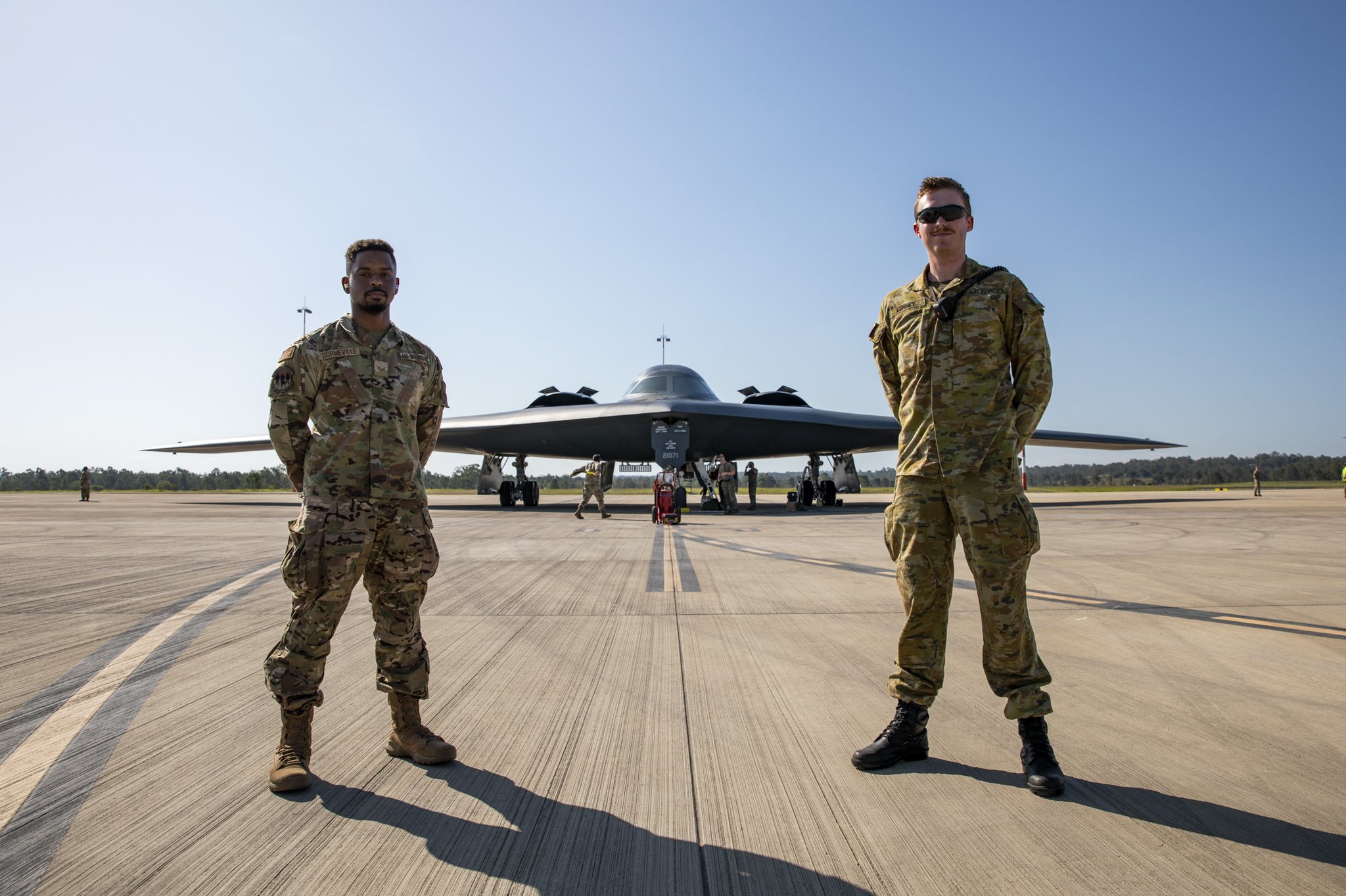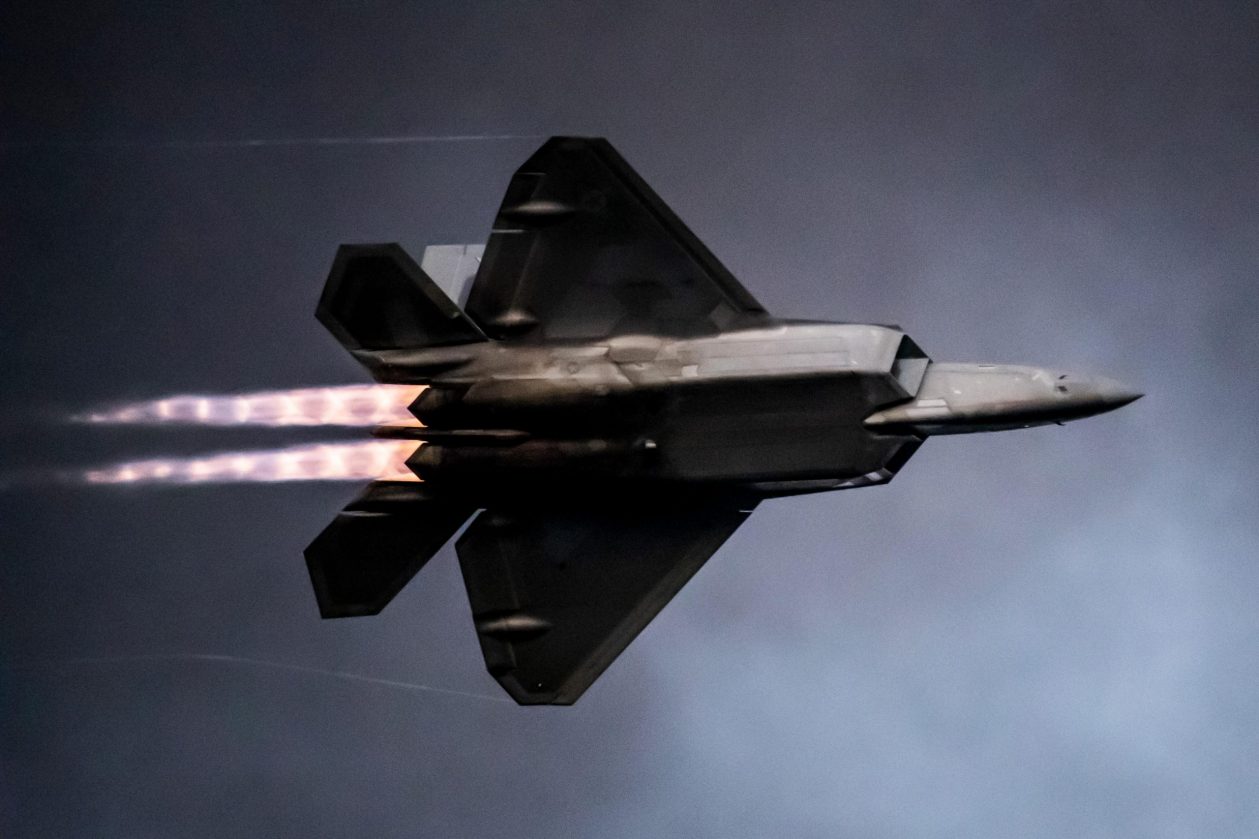While the global attention is on the Russia-Ukraine conflict, the US is stepping up its engagements with Australia in the Indo-Pacific region to deter a ‘belligerent’ China.
On 23 March, a B-2 stealth bomber conducted a mission in the region with five different fighter aircraft from the US Air Force and the Royal Australian Air Force, the Pacific Air Forces announced in a press release.
A USAF B-2 ‘Spirit’ flew from Whiteman Air Force Base, Missouri, to RAAF base Amberley, Australia. The combat aircraft was linked to the 509th Bomb Wing and became the first B-2 Spirit to land at RAAF Base Amberley, the release stated.
It was refueled by an Alaska Air National Guard KC-135 tanker in the Australian airspace and then integrated with eight fighter jets as a part of the training activities. Two RAAF F-35As, two RAAF EA-18 Growlers, two RAAF F/A-18F Super Hornets and two US Air Force F-16C were part of the exercise.
JUST IN: A @usairforce B-2 from @Whiteman_AFB integrated w/@AusAirForce in Australia to conduct a training mission in support of a #freeandopenIndoPacific
Click the link to find out more about the more than 50-hour round-trip trek.https://t.co/OqH3jqn9F0@INDOPACOM pic.twitter.com/BCvABCWpyA
— PACAF (@PACAF) March 24, 2022
Adm. John C. Aquilino of the United States’ Indo-Pacific Command and RAAF Air Vice-Marshal Joe Iervasi were on site to witness the B-2 on the ground.
After landing at Amberley, the plane went through a crew swap procedure before taking to the air. It was then integrated with F-22 Raptors from Joint Base Pearl Harbor-Hickam, Hawaii, and returned to Whiteman.
The B-2 established forces’ credibility in dealing with a complex and uncertain security environment while also showcasing the USAF’s global reach capabilities over the more than 50-hour round-trip to Australia and back, the statement said.

“This is the most consequential theater with the most challenging security issues, … and advancing our interoperability with critical allies like Australia is critical to maintaining a free and open Indo-Pacific,” Aquilino said in a statement.
“There are many aspects that are going on daily to continue to move the security relationship forward in a positive way to provide deterrence, prevent war, and maintain peace and stability within the region,” he added.
Focus On Indo-Pacific Region
In the past few years, B-2 bombers have undertaken several training missions over Australia. In 2020, Whiteman B-2 bombers flew over Australian training areas while Marines and Australian soldiers trained together to handle the strikes. A Whiteman B-2 bomber landed at Royal Australian Air Force Base Tindal in 2016.
In 2021, a B-1B Lancer traveled over Australia to operate with RAAF tankers. This past fall, the B-1 Lancers flew out of Diego Garcia for the first time in 15 years.

In recent years, the two countries’ defense cooperation has been primarily driven by the increasing importance of the Indo-Pacific area in a bid to counter China’s influence in the region. This objective clearly necessitates a diverse bilateral partnership.
It was reported earlier this year that a large US petroleum storage station is being set up in Australia’s Northern Territory to support military activity in the Indo-Pacific region. With a capacity of 300 million liters, the $270-million project will be the largest purpose-built gasoline storage facility in northern Australia.
In November last year, the US decided to send more fighter jets to Australia, including F-22 Raptors and F-35s to deter potential Chinese military aggression, as previously reported by the EurAsian Times.
Meanwhile, throughout the past decade, 2000 Marines were deployed in Australia’s Northern Territory during the mid-year dry season.

This partnership between the two countries has also been stretched to the maritime sphere. On Australia’s east coast, Prime Minister Scott Morrison has unveiled plans for a nuclear submarine station.
The A$10 billion (US$7.4 billion) facility will support Australia’s new nuclear submarine fleet, which is expected to be purchased under the AUKUS treaty.
Additionally, Canberra established a Space Command on March 22, in line with the US Space Force. “Space is becoming more congested and is already contested, particularly as the boundaries between competition and conflict become increasingly blurred through grey-zone activities,” the Australian defense minister said.
This cooperation between Washington and Canberra will only deepen as China’s military grows in size and might. Australia’s fears about upholding its sovereignty and economic interests have evolved as a result of China’s hawkish tone and growing influence in the region.
- Contact the author at ashishmichel@gmail.com
- Follow EurAsian Times on Google News




